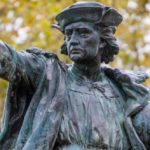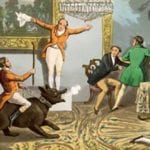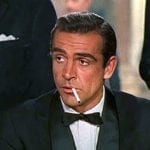 Technology
Technology  Technology
Technology  Religion
Religion 10 Catholic Histories That Reveal Acceptance of Abortion and Contraception
 Politics
Politics 10 Lesser-Known “First and Only” Facts about U.S. Presidents
 Miscellaneous
Miscellaneous 10 Things You May Not Know about the Fourth of July
 History
History 10 Shocking and Gruesome Founding Father Facts They Don’t Teach in School
 Crime
Crime The Ten Most Vicious Los Angeles Killers
 Miscellaneous
Miscellaneous 10 Indispensable Corporations the World Cannot Afford to Lose
 Animals
Animals 10 Unusual Wolves That Made The News
 Mysteries
Mysteries 10 Bizarre, Little-Known Phenomena
 Music
Music 10 Musicians Who Changed How Everyone Plays Their Instruments
 Technology
Technology 10 Little-Known Shifts in Computer Science
 Religion
Religion 10 Catholic Histories That Reveal Acceptance of Abortion and Contraception
 Politics
Politics 10 Lesser-Known “First and Only” Facts about U.S. Presidents
Who's Behind Listverse?

Jamie Frater
Head Editor
Jamie founded Listverse due to an insatiable desire to share fascinating, obscure, and bizarre facts. He has been a guest speaker on numerous national radio and television stations and is a five time published author.
More About Us Miscellaneous
Miscellaneous 10 Things You May Not Know about the Fourth of July
 History
History 10 Shocking and Gruesome Founding Father Facts They Don’t Teach in School
 Crime
Crime The Ten Most Vicious Los Angeles Killers
 Miscellaneous
Miscellaneous 10 Indispensable Corporations the World Cannot Afford to Lose
 Animals
Animals 10 Unusual Wolves That Made The News
 Mysteries
Mysteries 10 Bizarre, Little-Known Phenomena
 Music
Music 10 Musicians Who Changed How Everyone Plays Their Instruments
Top 10 Surprising Facts About America’s First Ladies – 2020
The role of the First Lady is a unique position. Each woman who has occupied the unofficial office has made it their own, taking on everything from hosting guests, holding press conferences, tackling social issues, or influencing leaders behind the scenes. But there may be some strange facts you haven’t heard about some of America’s most prominent women. Whether it’s joining an armed patrol during a Chinese rebellion, contacting spirits in the White House, or being accused of murdering the president, these are some of their most shocking stories.
10 Presidential Conspiracy Theories
10 Dolley Madison Had An Honorary Seat In Congress
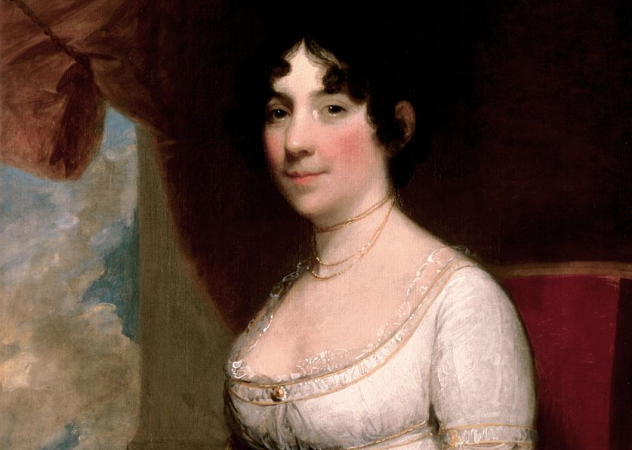
Dolley Madison helped define what a first lady would be, hosting guests and addressing social problems. She campaigned for her husband, hosted events with single President Thomas Jefferon, raised funds for Lewis and Clark, and famously saved the famous portrait of George Washington from the White House when the British burned D.C. in the War of 1812. She was even the first citizen to send a message by telegraph.
In 1844, before women were even allowed to vote, Dolley Madison had a seat on the floor of the House of Representatives whenever she wanted. The former first lady enjoyed listening to the elected officials debate each other over the latest policy. Today only Members of Congress, their staff former members, and the President and Vice President are allowed on the House floor. Congress actually had the fourth first lady’s back a few other times as well. After the president died in 1836, the House paid her to publish books of James Madison’s papers. Then when she fell into poverty twelve years later, so much so that her former slave Paul Jennings was giving her money when he saw her, Congress paid her today’s equivalent of over $700,000 to buy more of the papers from her. When President Zachary Taylor gave her eulogy, he may have originated the term by referring to her as America’s “First Lady”. The alternate term of “Presidentresss” was also used by some, but it didn’t stick.[1]
9 Lou Hoover Patrolled Her Home In China During The Boxer Rebellion
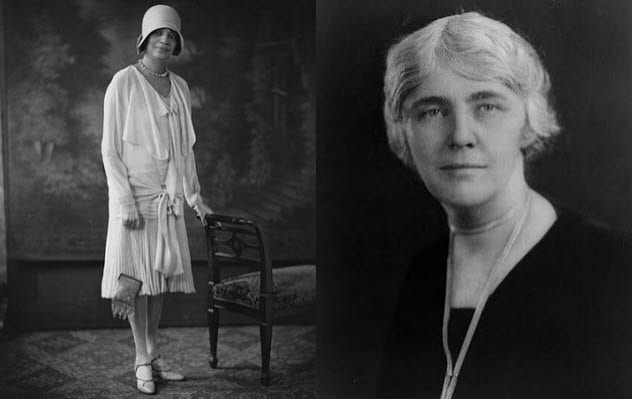
Lou Hoover was a horse-riding, roller-skating, architecture and nature buff fluent in five languages. She married her geology classmate and future president Herbert Hoover in 1899 and the newlyweds took off for China. Mrs. Hoover quickly learned Chinese, a language the couple would use when they wanted to communicate privately in front of guests at the White House. Then in 1900, the Boxer Rebellion began, a conflict in which many Chinese violently attacked foreigners because of tensions over increasing Western influence on the country.
Mrs. Hoover treated gunshot wounds, built barricades, and rode through the area on her bicycle with a pistol patrolling with Western troops. She would have to help out once again when her family was in London during the start of World War I, and she was asked by the U.S. Ambassador to organize aid for the displaced. She became a champion for Belgium while they were occupied. In the U.S., she helped organize the American Red Cross’ Canteen Escort Service to bring home wounded American soldiers. Later in her life, she helped with the founding of the Girl Scouts. During the Great Depression, which her husband struggled to control, she made regular radio broadcasts to the American people. It was a life full of outdoorsmanship and humanitarianism for the wife of one America’s least effective presidents.[2]
8 Mary Todd Lincoln Held Seances In The White House
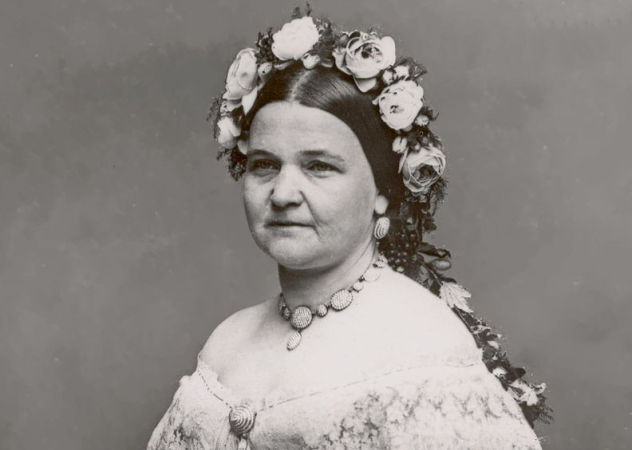
In the aftermath of the civil war, when 750,000 American lives were lost, there were many families across the country desperate to connect with the Great Beyond. There was a boom of “spiritualism”, or the idea that one can communicate with the dead, especially popular with the upper class. Mary Todd Lincoln had lost her mother, three of her children, and her husband, killed in front of her. But it was her son Willie’s death in 1862 that seemed to take the deepest toll on her. He was eleven when he died from typhoid fever, which sent both his parents into a deep despair and time of isolation and mourning. The demands of the civil war eventually drew out the President, who tied a black ribbon around his hat in remembrance of his son, which remained there until his own untimely demise.
Mrs. Lincoln began to visit with a group of mediums called the Lauries in order to try and reach him. She even hosted seances in the Red Room of the White House, with President Lincoln in attendance for several of them. She seemed to take deep comfort in them, writing to a relative, “Willie Lives. He comes to me every night and stands at the foot of the bed with the same sweet adorable smile that he always has had…. You cannot dream of the comfort this gives me”. Mrs. Lincoln even visited a spiritual photographer who took a photo that supposedly showed the ghostly silhouette of the late president standing over her. Even today, there are rumors that the ghost of Willie, his brother Eddie, and their father still haunt the White House today.[3]
7 Lucretia Garfield Nursed Her Husband Back to Health After An Assassination Attempt
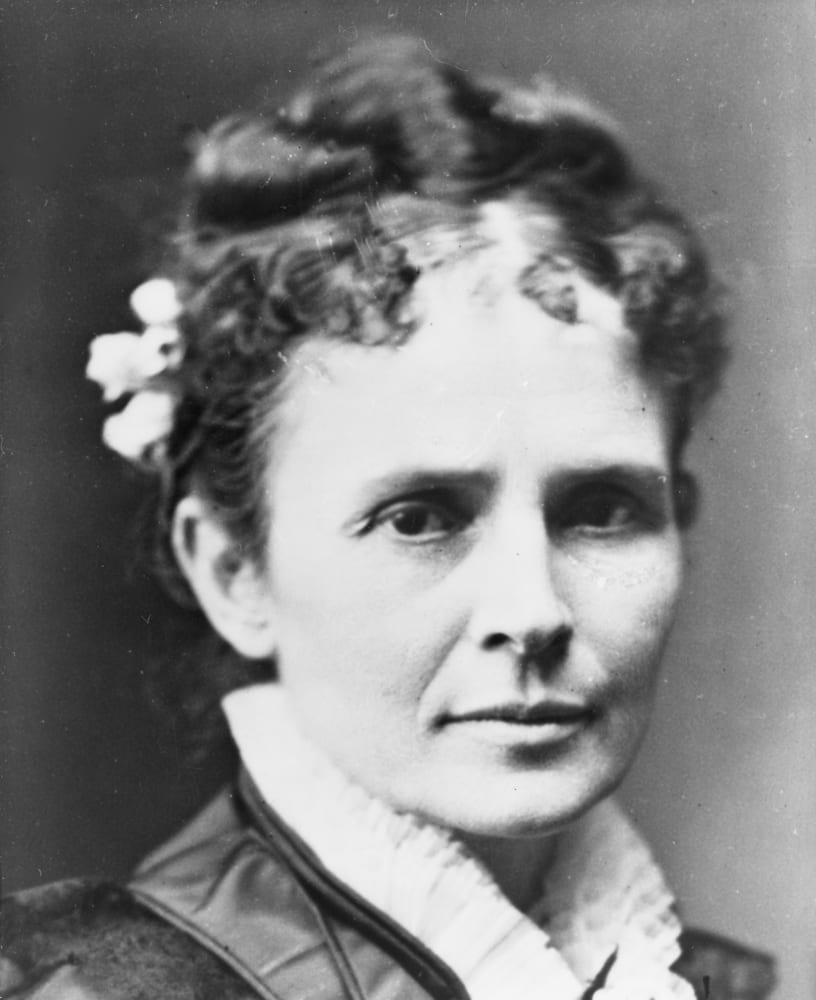
The love story of Lucretia and James Garfield is not the smoothest or most romantic one in the history of U.S. presidents and first ladies. He wrote in his diaries that she bored him. She was deeply upset at his adultery, and distrusted his motives for marrying her, saying that she believed it was more out of duty than love. They were apart for the early part of the marriage as he traveled in the Union army and for the state legislature. But hardship would bring them closer.
In 1881 though, Mrs. Garfield was struck with severe malaria and almost died. President Garfield was overwhelmed with this, and took over more of the childcare and education of their children. When she recovered slightly, she decided to travel to the Jersey shore to hopefully heal in the fresh air. What they didn’t know was that an attempted assassin, Charles Guiteau, was waiting at the train station to kill the President when he took her to the train. But when he saw the frail state of the first lady, he held off, worried about how witnessing the murder would effect her. On July 2nd, Guiteau did shoot James Garfield, and Mrs. Garfield rushed back to Washington to care from him, only barely healed herself. The country took great comfort in the brave face that she showed, and her calm bravery when the President did die in September, with his wife by his side. After his passing, Congress tried to pay his male doctor double the salary of his female doctor, but Mrs. Garfield stepped in and ensured that both doctors received an equal payment of $1,000.[4]
6 Florence Harding was Accused of Murder
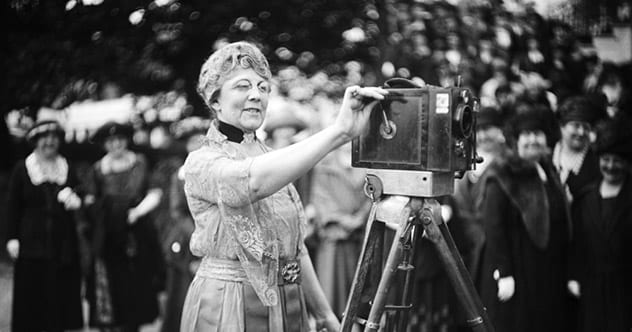
The death of President Warren Harding came as a shock to the nation. He was only 58 years old, well-traveled, seemingly strong and healthy. It was halfway through his term, and he was a popular president. His wife Florence had always been working behind the scenes to support his career, since his start as newspaper editor. She even once told reporters, “I have only one real hobby—my husband.” But then, President Harding embarked on a speaking tour across the country called “The Voyage of Understanding”. On a visit to Alaska, President Harding became extremely tired and confused. He passed out several times on the way back to Washington. Three days later on August 2nd 1923, he died at a hotel in San Francisco while his wife was reading to him. She told doctors he had a convulsion and then passed.
It was originally proposed that he may have been poisoned from bad crab meat. Doctors then believed he had severe pneumonia, and eventually ruled it as a stroke. But Mrs. Harding started to act suspiciously, embalming him immediately, refusing an autopsy, and destroying a number of his papers. Mrs. Harding died only a year after her husband. After her death, retired FBI agent Gaston Means published a book in 1930 accusing her of murdering Harding to protect his legacy from scandals of affairs and bribery. Later it was revealed the book was mostly fabricated. It is now believed that the President died of a heart attack.[5]
Top 10 Faux Pas Committed By US Presidents
5 Eleanor Roosevelt Forced Newspapers to Hire Female Reporters (And May Have Had An Affair With One)
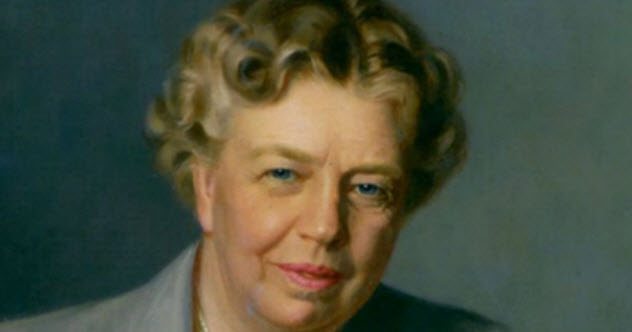
Eleanor Roosevelt is one of the country’s most famous First Ladies, and has long been regarded as a women’s rights icon. One lesser known aspect of her activism is how she insisted that only female reporters would be allowed at her press conferences. This ensured that any newspaper who wanted access to her would have to have a woman on staff. Over her husband’s twelve year term, she hosted 348 conferences, first discussing household issues, and then later on expanding to deeper political issues and bringing in special guests. This included female members of President Roosevelt’s administration and foreign dignitaries like Soong Mei-ling, wife of Chinese president Chiang Kai-Shek.
One of the female journalists, Lorena Hickok, may have been closer than just a colleague to the First Lady, or closer than even a good friend. Hickok was assigned to cover Mrs. Roosevelt in 1932, and she eventually gave up her position to move into the White House in the room next door to the First Lady. The two exchanged thousands of letters, sometimes even two a day, with one quote from Hickok reading “I want to put my arms around you and kiss you at the corner of your mouth” and another from Roosevelt “I ache to hold you close. Your ring is of great comfort. I look at it and think she does love me, or I wouldn’t be wearing it.” The women remained close their entire lives.[6]
4 Elizabeth Monroe saved Lafeyette’s Wife From Execution
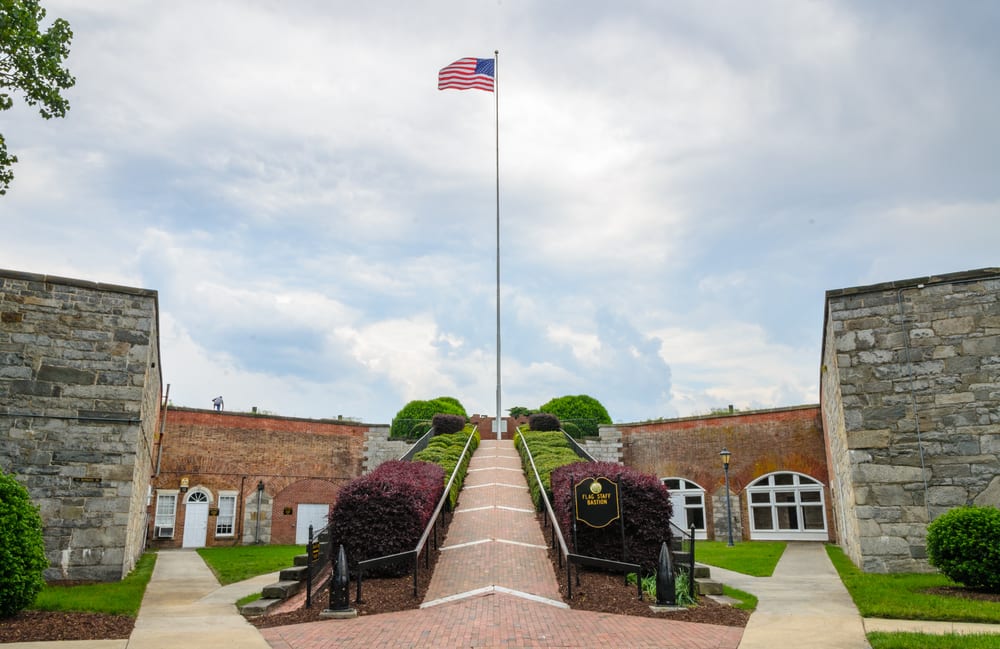
Elizabeth Monroe married future President James Monroe when she was only seventeen in 1786. The couple first lived in Virginia, but traveled as the future president began his political career. In 1794, President Washington sent them to Paris during the French revolution, as James was appointed U.S. Minister to France. There they became well-liked. Mrs. Monroe took on European fashion and social customs, and earned herself the romantic nickname of la belle Americaine. The Monroes helped to build social networks for their young country in European circles and their elegant attitudes helped warm up foreign acceptance of the United States and its new form of democracy.
Marquis de Lafayette was an American hero, one of only eight people in history to be granted honorary citizenship of the United States. His work in the Revolutionary War was instrumental in ensuring victory against Britain. The Monroes would get the chance to help repay the favor during the heat of the conflict in France, when Lafayette’s wife Adrienne de Noiolles de Lafayette was being held in prison awaiting execution by guillotine. Mrs. Monroe insisted on visiting her in prison, and this “unofficial” intervention made it clear that the Americans would not be pleased if any harm were to come to her. After this visit, Adrienne was released.[7]
3 Edith Bolling Wilson Ran The Country and Was Descended From Pocahontas
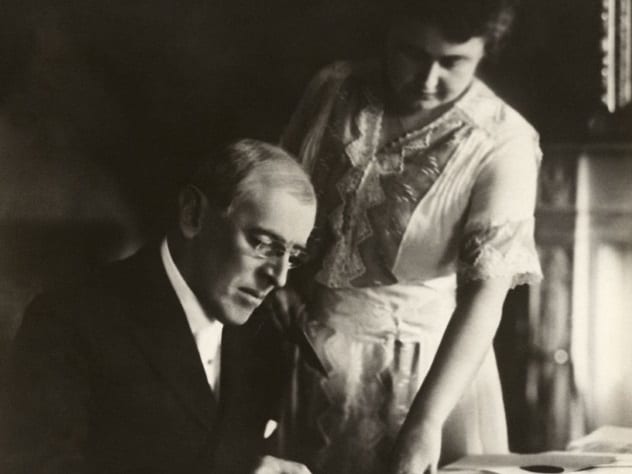
Edith Wilson was a unique first lady in more ways than one. For one, she was the great-great-great-great-great-great-great-granddaughter of Pocahontas, making her one four-hundred-eightieth Native American. But she made sure people knew about that connection. Despite coming from one of the oldest English families in Virginia, the Bolling family had fallen into poverty after the Civil War freed their slaves. Throughout her youth, Edith was excluded from high society. Her key to notoriety before becoming first lady was by claiming this heritage. After widow Edith married widower Woodrow Wilson in 1915, this fact was an interesting conversation starter at events.
But Edith’s more important legacy was as the unofficial first woman president of the United States. From the moment she married the incumbent President, she got to work helping him as the US entered World War I. He gave her access to classified war documents and she sat in as an advisor in meetings. Then in 1919, President Wilson had a stroke that incapacitated him. The First Lady assured everyone that he simply needed rest. She took any memos or papers for him into his room to be “reviewed” and returned them with notes. She fired the Secretary of State who held a cabinet meeting without the president. She even sent the British ambassador packing after he refused to fire an aid who had made a vulgar joke about her. She carried on like this for seventeen months, although publicly she insisted she never made any presidential decisions.[8]
2 Anna Harrison’s Packed Bags Never Made It
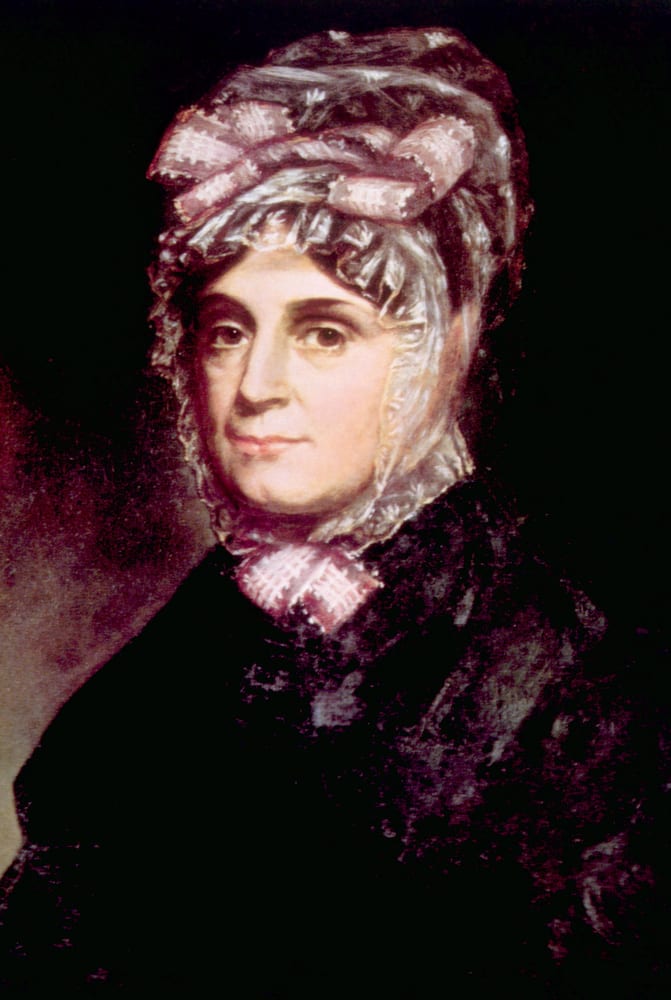
When young Anna Symmes met soldier William Henry Harrison on a visit to her sister in Kentucky, there was an instant connection. Anna’s father objected to their relationship because William was not skilled in any trade other than war, despite the fact that he had been a soldier himself, but the two married secretly in 1795. After seeing the happy couple, her father eventually changed his mind. She quickly had ten children and educated them on the Indiana frontier, despite her childhood upbringing being that of a coastal elite.
In 1840, William won the presidency, but Anna had to stay at home as she recovered from an illness. Their daughter-in-law, widow Jane Harrison, took on the First Lady hosting duties temporarily until Mrs. Harrison could make the long journey safely. But before Anna had even finished packing her bags, she received devastating news. In April of 1841, President Harrison died after a single month in office from pneumonia. Congress agreed to offer Mrs. Harrison a pension equivalent to the president’s salary, and she lived until the age of 88. President Harrison was the first U.S. President to die in office, and the one with the briefest term.[9]
1 Mary Arthur McElroy was an Anti-Suffragette
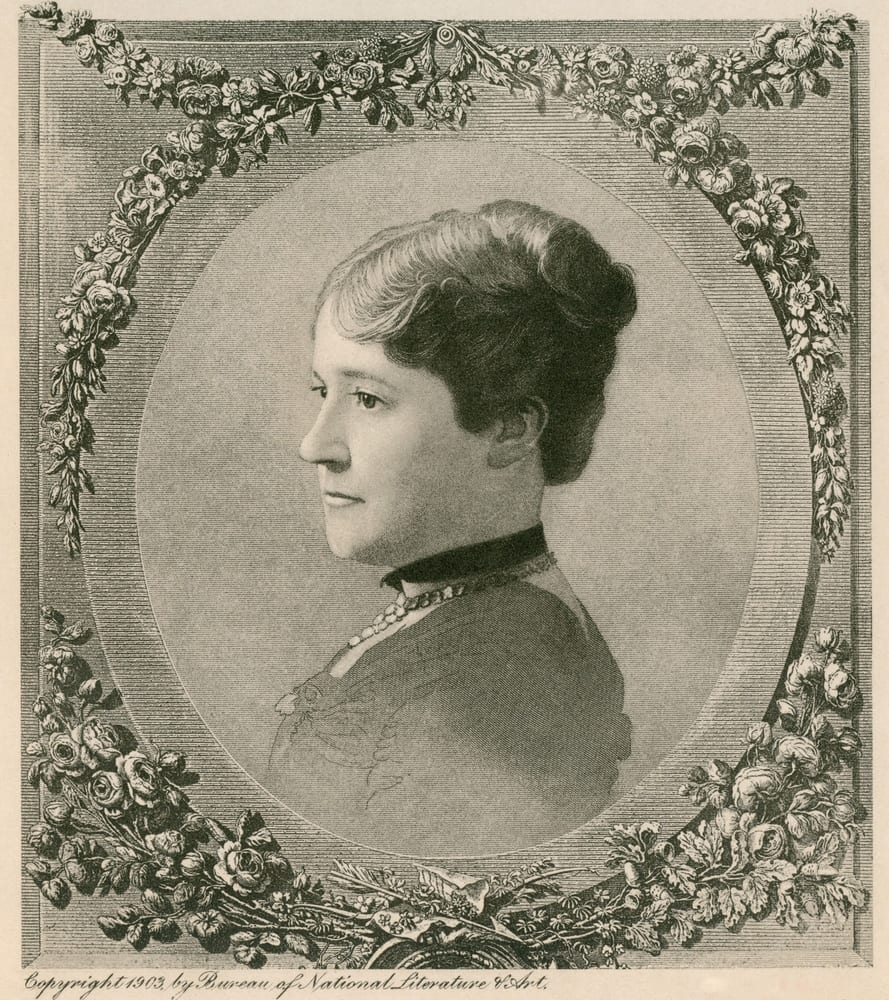
Chester Arthur went into his sudden presidency after the assassination of President Garfield as a widower. His beloved wife Ellen died of pneumonia in 1880, and the grieving president would gaze at a stained glass window that he donated in her honor at a church he could see from the White House. The president’s younger sister, Mary Arthur McElroy, would come to D.C. during the “busy season” to act as the official hostess. Although President Arthur never officially granted her the title of First Lady, she was well-liked during her events.
However, when Mrs. McElroy returned to her family home in Albany, New York during the “off-season”, she acted as a member of the Albany Association Opposed to Women’s Suffrage. In fact, Albany was a particular strong-hold for the anti-suffrage movement. The group first met in 1894, and again in 1915 and 1917. They sent A quote from one of their pamphlets read “There are still women enough left outside of the clique of female agitators, who believe that woman can always do her best work at home”, to which a suffragette publication responded “If a woman can always do her best work at home, why does the AntiSuffrage Association send Mrs. CranneI to conduct a political campaign hundreds of miles away from Albany?” Of course, the anti-suffrage movement ended in 1920, when the 19th amendment was passed giving American women the right to vote.[10]
Top 10 Costly US Presidential Campaign Blunders

